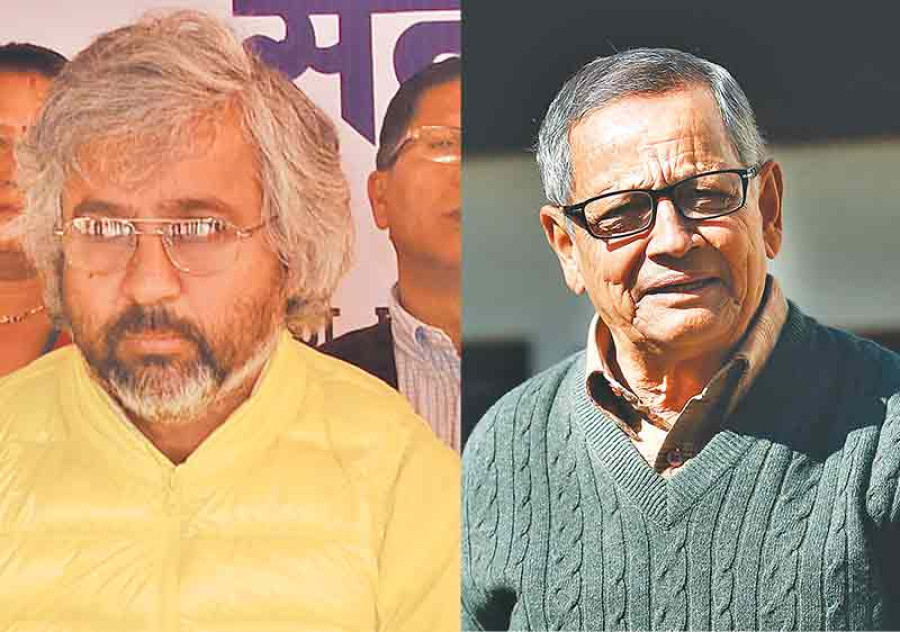Miscellaneous
Civic sense
People’s Movement 2006 owes large part of its success to the civil society movement led by Krishna Pahadi and Devendra Raj Panday.
Kamal Dev Bhattarai
People’s Movement 2006 owes large part of its success to the civil society movement led by Krishna Pahadi and Devendra Raj Panday.
When the then king Gyanendra Shah staged a coup on February 1, 2005, political parties initially failed to spring into action against the autocratic regime. With the parties’ political capital at an all-time low—due to years of misrule, bad governance and instability—rousing the people to move against Gyanendra’s step proved a difficult task for them.
There was direct censorship of the media, restrictions on organising political rallies, and freedom of speech and expression was curtailed. The top leaders were either under house arrest or underground while a large number of cadres were arrested
It was then that civil society leaders stepped in. It was they who first came on the streets and protested against the regime. Among them, Krishna Pahadi and Devendra Raj Pandey were the most visible faces of the pro-democracy civil society initiative against the royal regime. Led by Pahadi and Pandey, the Citizens’ Movement for Democracy and Peace (CMDP) was instrumental in laying the groundwork for the 2006 movement.
It was only after the CMDP launched its initiatives that the political parties’ mass meetings started becoming dynamic with greater participation of the people. Given their towering stature and mass appeal, thousands of people poured out on to the streets and protested against the king’s autocracy. The CMDP was a loose group or movement formed for the cause of establishing democracy. At a time when the parties were calling for an end to the autocratic reign of the monarchy, the civil society movement pushed the agenda of a republican set-up. One interesting aspect of the civil society movement was that, in a role reversal, party leaders were asked to sit among the audience and listen to the speeches of civil society leaders. The civil society initiative took off, mainly due to their impressive track records. Pahadi was one of the country’s leading human rights defenders while Pandey had played an important role in the 1990 People’s Movement. The fact that many CMDP leaders including Pahadi and Panday were apolitical and not party members helped the movement to gain credibility.
While Pahadi remained a staunch critic of the Maoist armed movement, Pandey was one of the behind-the-scenes players who prepared the groundwork for a broader accord. In fact, Pandey was one of the first civil society leaders who met Maoist Chairman Pushpa Kamal Dahal and urged him to shun violence and enter peaceful politics.
The CMDP launched a nationwide campaign, organizing more than two dozen large mass meetings and demonstrations throughout the country in 2005 to establish a democratic republic with guaranteed fundamental freedoms and human rights. Pahadi was the first person to organize a demonstration against Gyanendra after the king seized power on February 1, 2005 and initiated a sweeping crackdown against the political parties. He was arrested on February 9 and spent 145 days in detention.
The excellent partnership that CMDP activists had with the political parties, especially with the student leaders, proved crucial to mobilising the masses. Popular student leaders such as Gagan Thapa and Ram Kumari Jhankri worked together with CMDP activists.
Pradeep Poudel, then a student leader and now a member of the Central Working Committee of the Nepali Congress, said, “Both Pandey and Pahadi have a clean image, and they are not associated with any political ideology or party. Their backing helped to enhance the credibility and legitimacy of the movement.”
Poudel, who worked closely with these two during the anti-king movement, added that their presence and backing helped to intensify the political movement. “Their social posture and stature was an asset for us and the people who were fighting for a republic,” he added.
—By Kamal Dev Bhattarai




 5.15°C Kathmandu
5.15°C Kathmandu










